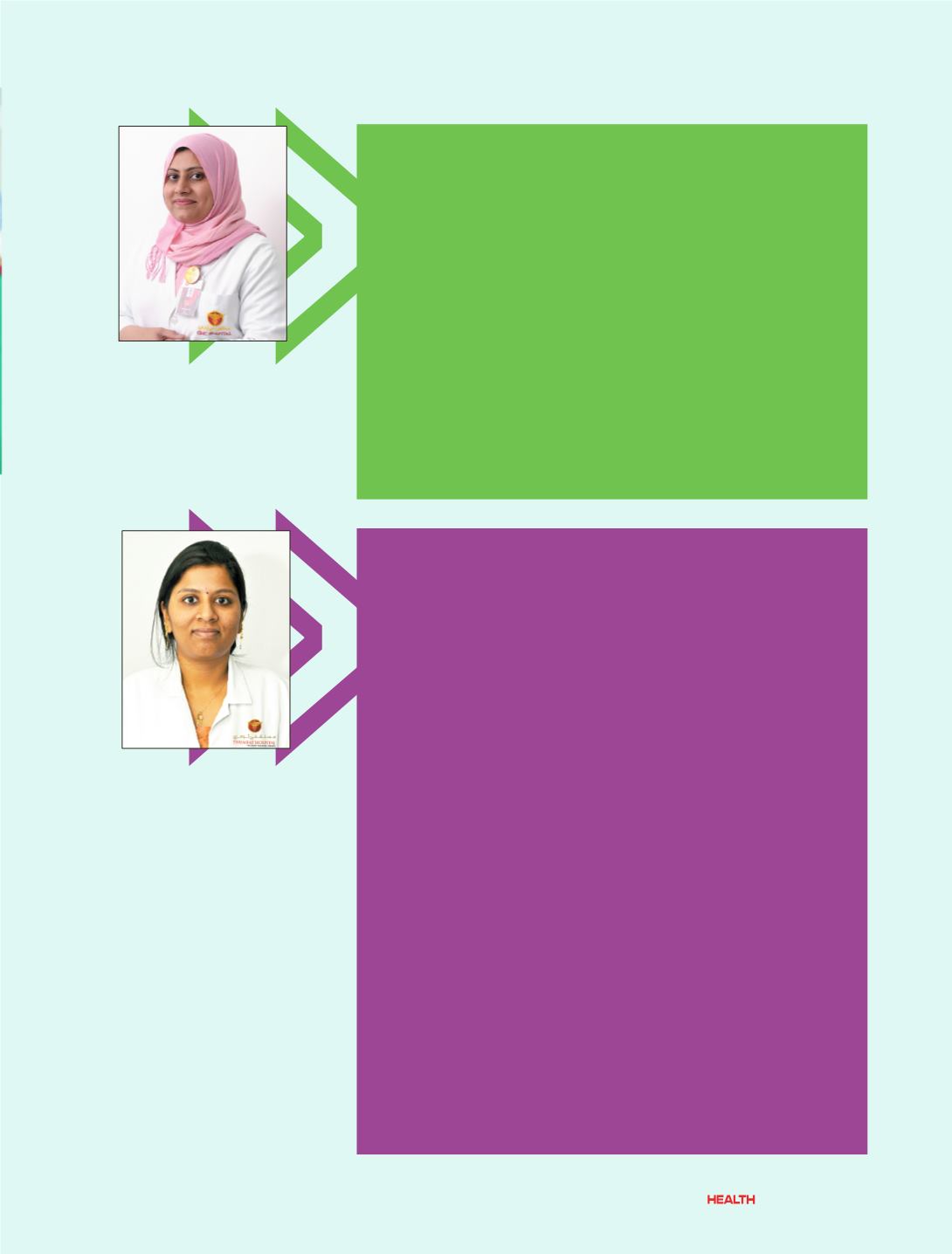

Q:
I have been hearing a lot about Stevia; what is this?
Fahmida Jafri, Department Head, Clinical Nutrition & Dietetics responds:
“Stevia is low calorie ‘natural’ sweetener which is very popular due to
its source and origin as well as a good sugar substitute. It is extracted
from leaves of a plant called Stevia rebaudiana. This herb belongs to
Chrysanthemum family that grows wild in Paraguay and Brazil. South
Americans have been using stevia as a food sweetener for centuries. Stevia
is presently being used in many soft drinks and other products as a sugar
substitute. The major component of Stevia is mostly, extracted Rebaudioside
A with some proportion of Stevioside, which is a crystalline compound
that tastes 100 to 300 times sweeter than table sugar. In the digestive tract,
these components are broken down into glucose and steviol. The glucose is
used by bacteria in the colon and steviol is excreted as it cannot be further
digested. However, there is a general lack of long term studies on human
subjects on Stevia’s use and effects. It seems fair enough to say that when
consumed in reasonable amounts, stevia may be an exceptional natural
sweetener compared to artificial sugar substitutes.”
Q:
What are Shingles? My husband developed this
and is unable to go to work. How is this treated and is it
dangerous in the long run?
Dr. Princy Anne Philip, General Practitioner responds: “To start, Shingles is
a contagious, viral infection caused by Varicella-zoster virus, the same virus
that causes chicken pox. Once you have had chicken pox, the virus remains
dormant in nerve roots near your spinal cord and brain, awaiting the next
favorable conditions to reactivate. During its inactive period, the virus is
generally harmless and asymptomatic. A few years later, mostly during
a period of stress, illness or weakened immune system, the virus lying
dormant at the nerve roots may be triggered to produce a painful skin rash,
what is commonly called shingles (herpes zoster.)
Shingles can present with the following symptoms: pain, which is usually
the first symptom. Pain is usually followed by a red rash, generally seen
as a single stripe of fluid filled blisters that drapes around either side of
the torso. Rash may be associated with itching at times. Other areas that
the rash is seen to occur is around one eye, or one side of the neck or face.
Other less associated symptoms are fever, fatigue, headache and sensitivity
to touch or light. The symptoms generally last between two to six weeks.
The treatment of Shingles entails easing associated symptoms as well as
prevention. The treatment modalities include the following: first, antiviral
medications that should be prescribed by a doctor. These help hasten
healing and reduce the risk of complications. Second, painkillers such as
capsaicin cream or Lidocaine can be used. Third, tricyclic antidepressants
can be used to relieve severe neuralgia in addition to its antidepressant
action. Fourth, anticonvulsants, in addition to its original mode of action,
can also help with neuralgia. Additionally, some physicians prefer to use
steroids as they are known to relieve inflammatory conditions.
Fahmida Jafri
Department Head, Clinical
Nutrition and Dietetics
Dr. Princy Anne Philip
General Practitioner in
the Internal Medicine
Department
33
May/June 2015















